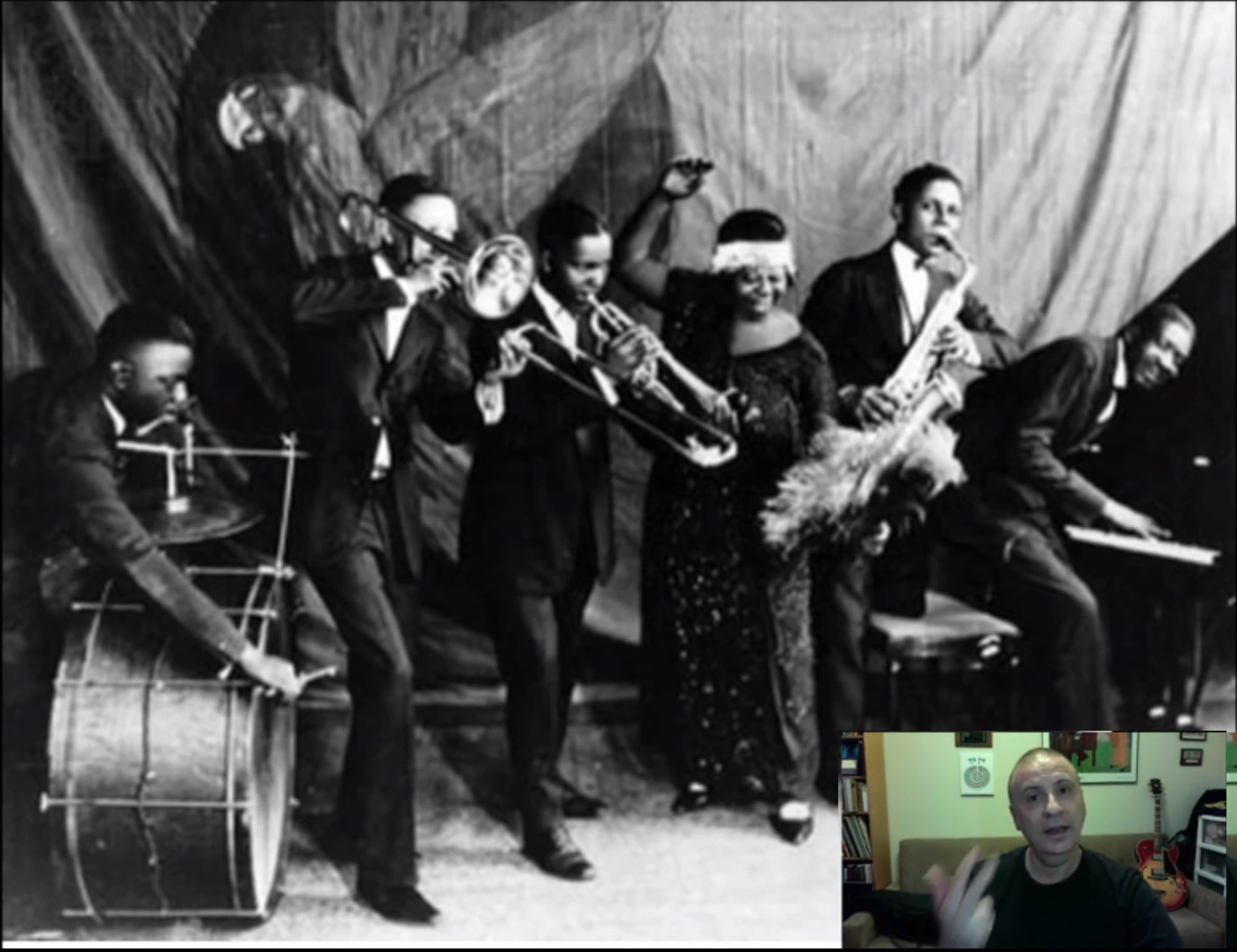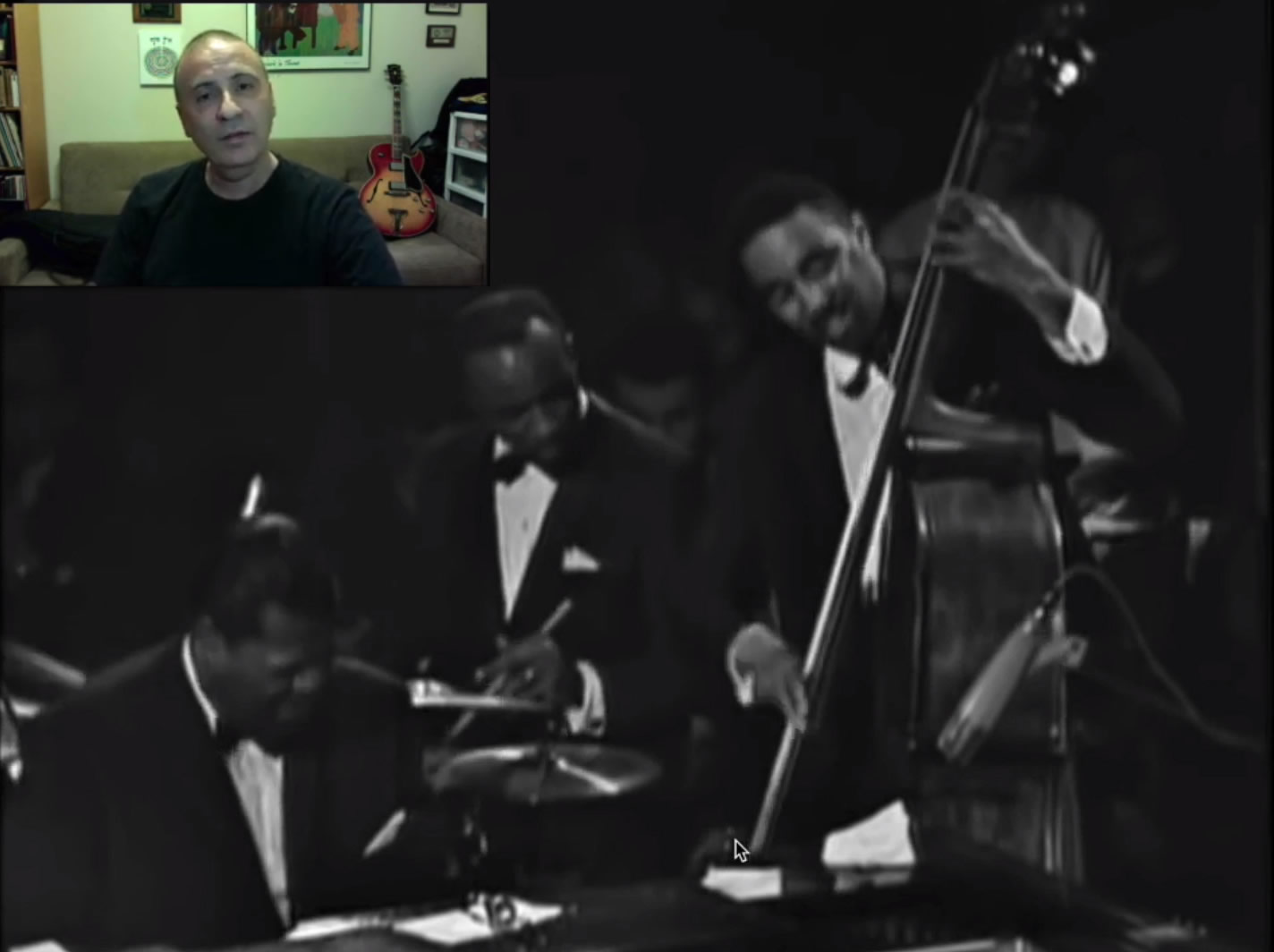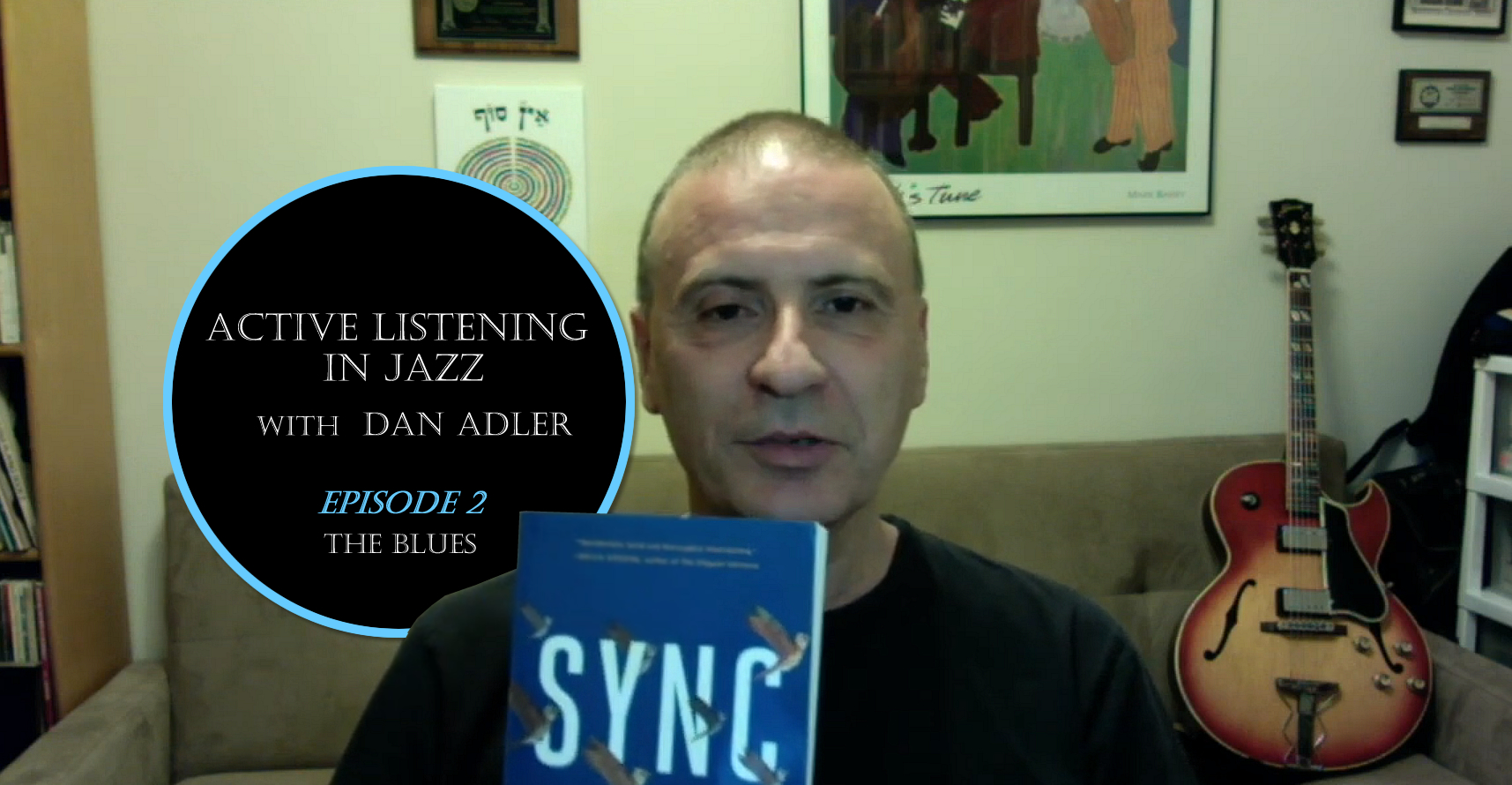Welcome back to the second episode of Active Listing In Jazz for Non-Musicians by Dan Alder.
If you have been curious about Jazz, I hope this helps you become a more active listener. If you are a Jazz musician, I hope you will share this with your friends and family.
The reason for these episodes is to give you enough information to be able to enjoy Jazz at a higher level.
Recently I’ve been reading this book ~ Sync: How Order Emerges from Chaos in the Universe, Nature, and Daily Life  by
by
Everything In Jazz is about being in synchronised time. This happens at a very granular level when you’re listening to a beat ~ and there is a certain pulse.
And there are rhythmic movements against that pulse. Then it happens at larger units when you are going to units of four bars, or eight bars or twelve bars.
In this particular episode we’re going to focus on one simple thing that is probably at the real foundation of Jazz. And that is the Blues form.
The Blues form is very simple. All I want at the end of this episode is to be able to count to 12. Very simple and very practical because this will allow you to recognise the Blues form wherever you hear it.
When you hear it in a Jazz setting, when you hear it in Rock and Roll, when you hear it in old Delta Blues, when you hear it in any form of Blues that is the building block of so much of the music we listen to in everything up to current music.
So the main thing you have to understand about the Blues it its form. Blues is built of (and again I’m not going into the history ~ I want you to research that on your own) but I want you to just think about the form of the Blues.
 The form of the Blues is basically three lines if you think about it or three units of four bars. So what’s a bar. You’ve all been in some high school band or something and you know how to count up to four.
The form of the Blues is basically three lines if you think about it or three units of four bars. So what’s a bar. You’ve all been in some high school band or something and you know how to count up to four.
You know that a musical bar is a synchronized rhythm of four beats a bar. That means you count to four and then you start counting again. And units of four bars can be put together. So 4 units of 4 bars in 4/4 rhythm would essentially be 1, 2, 3, 4 and multiply that 4 times. And then repeat the unit of 4, which is one bar then each unit of 4 bars get repeated 3 times.
So you’re looking at two rhythms, or two frequencies of rhythm. One is at the single bar level. One is at the 4 bar level. And then you have 3 of those and that repeats the form. And so the form is the slowest moving unit and all we want to do in this video is to learn how to count the form.
And why is this important ~ because this is the first step to not feeling lost in a Jazz context. If you can count the form ~ if you can recognise groups of 4 bars ~ if you can recognise when an 8 bar grouping ends, you can recognise a Blues form. Then you’re already familiar, you feel like there is something that is repeating. There is something that you can connect to when you’re listening to it. And it’s an endless array of beats and bars and one is coming here and the two is coming there and you’re not sure what’s happening then you feel lost.
But when you can count the rhythms and you know when things are starting and ending then you have a much greater chance of keeping track of the music and staying in focus on what people are doing.
So we’re going to start really simple with a 12 bar Blues, and in this 12 bar Blues there’s not going to be any soloists. So that is going to make it much easier to count and all we are going to focus on is counting the bars. Counting within the bars and counting the bars. So here we go. 
Three rows of 4 bars. You always hear the ‘One’ at the beginning of the 12 bar.
So you’re beginning to see how this counting works for the Blues. 3 systems of 4 bars each creating together a cycle of 12 bars. And that’s how all Blues works in general.
And you can follow along with any Blues, whether it’s slow or fast. Whether it’s somebody singing, whether its somebody playing and we’ll get to that in a minute.
By the way if you are a musician and you looked at the chords there, those were not exactly the chords being played in the backing track, but let’s ignore that at the moment.
So let’s talk for a moment about historical Blues and certainly the Blues you hear being sung and all the forms of Rock and Roll and so on.
So the form always stays the same. The 3 lines or 3 groupings of 4 bars. But what you see is that the lyrics typically have a different structure.
The lyrics are basically a repeat of the same line once. Then the second time is the same as the first in most cases. And then the third is sort of like a punchline. So it’s almost like the format I wouldn’t a joke as some of them are very, very sad and serious.
They basically have a format of a question, a repeat of the question and then an answer. Some kind of conclusion. It’s like a short story in a way.
I’m sure you all know ‘You Ain’t Nothing But A Hound Dog’ from Elvis Presley ~ ‘Crying all the Time, you Ain’t nothing but a hound dog crying all the time, well you ain’t never caught a rabbit and you ain’t no friend of mine.’
That is the way it works. The first two systems are repeated and then you get the third one that resolves it, usually in a surprising way. So let’s see how that system of lyrics works together with the 12 bar form.

Ok you see how that worked. The lyrics and the form worked together to create this unique creation that we call the Blues.
Now what is important is for you to do some background research. Go back to some Blues songs you know and Rock and Roll songs you know and try and do this counting.
And of course if you’re listening to Jazz and find this Blues try to apply this counting.
We heard some backing tracks that didn’t have a soloist and we heard some tracks with lyrics. Now we are going to hear some real Jazz Blues. And in this case its Oscar Peterson and his famous trio and this is going to be a lot harder to keep track of. Number one because it’s going to be much faster, and number two because you’re going to see that the trio is working against the rhythm.
You’re counting and as you’re trying to keep track of all the form you’re going to see what you’ve probably heard of the syncopation and all sorts of games with against the time really give that feel we call the ‘jazzy feel’.
But again in order to know where you are in the form. In order to know what it is they are referencing you have to keep track of this form. If you’re not keeping track of the form then you’re kind of missing out on the Bluesy historical element of this whole performance and you’re just hearing the very first level of intelligence that’s going on here.
There’s a whole other level about how they’re dealing with the chords, about how they’re dealing with the reharmonisation. What they are doing with the rhythm. All of these things ~ there are many, many layers going on here. And there’s areas of interplay and how they relate to each other and how a phrase on the piano is suddenly reflects itself on the bass. A bass note then pushes Oscar Peterson into another direction. How the drums are interacting and all of these things are aspects and different layers on top of each other.
But the very basic layer is knowing what the form is, you are able to track and keep counting 12 bar forms. So I’m going to try to count with you and them I’m going to ask you to do is find some Blues on your own. There’s a million on YouTube and Jazz Blues on Youtube.
Just try to count it out. Stay with the soloists, stay with the different players and just try to keep the form and know where you are at any moment in the Blues form. 
So this concludes the second episode of Active Listening in Jazz for Non-Musicians and I hope you are starting to get some understanding of the form in Jazz and we’ll talk a lot more about that and different forms.
But really the Blues is the basis of everything. I hope you start listening a little more accurately at least to Jazz Blues at this stage and I’ll see you in Episode number 3) Form
~ ~ ~ ~ ~ ~ ~ ~ ~ ~ ~ ~ ~ ~ ~
Check out my Active Listening in Jazz for Non-Musicians Facebook Group. Join today to find out more.
See my Active Listening in Jazz for Non-Musicians Youtube Playlist. Subscribe to the playlist to catch new episodes.
Episode 1) Intro & Singlalong Dan Adler blog series
Episode 2) The Blues
Episode 3) Form
Episode 4) Miles Davis, ‘So What?’
Episode 5) Harmony & Improv
Episode 6) Jazz Expression
Episode 7) Rhythm Section
Episode 8) Story and Motif
